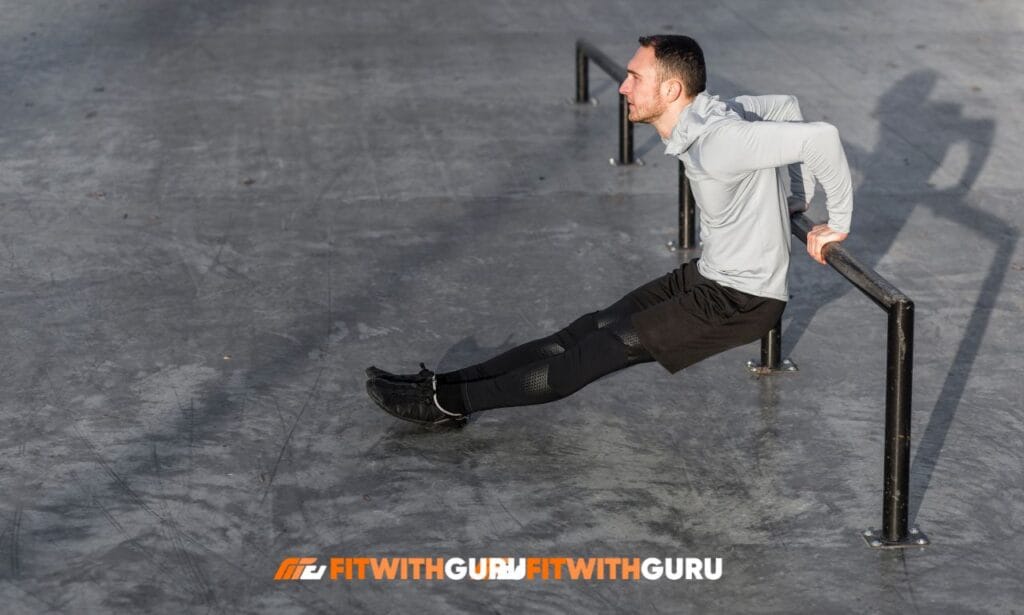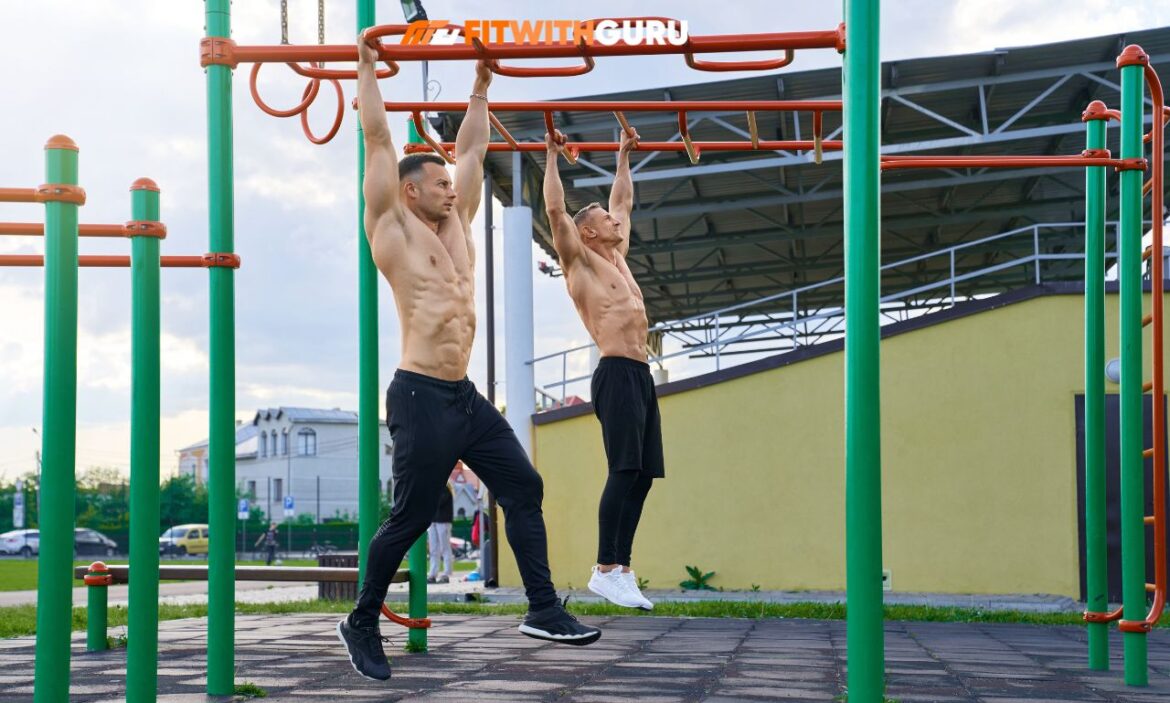Calisthenics dip bars represent one of the most versatile and effective pieces of equipment for building upper body strength through bodyweight training. Whether you’re a beginner looking to master your first dip or an advanced athlete seeking complex movements like muscle-ups, calisthenics dip bar offer endless possibilities for progression.
These parallel bars have become the cornerstone of outdoor fitness parks and home gyms worldwide, transforming how people approach functional strength training.
What Are Calisthenics Dip Bar and Why They Matter
Calisthenics dip bars are parallel bars specifically designed for bodyweight exercises, typically standing 18-24 inches off the ground with handles positioned shoulder-width apart.
Unlike traditional gym equipment that isolates specific muscles, calisthenics dip bar engage multiple muscle groups simultaneously, promoting functional strength that translates to real-world activities.
The compound movements performed on calisthenics dip bars create natural movement patterns that improve coordination, balance, and proprioception while building impressive upper body strength.
Essential Equipment Setup
Your training objectives, available space, and degree of experience all play a role in choosing the best calisthenics dip bar.
| Feature | Beginner | Intermediate | Advanced |
| Bar Height | 18-20 inches | 20-22 inches | 22-24 inches |
| Width | Fixed width | Adjustable 18-24″ | Adjustable 16-26″ |
| Weight Capacity | 200-250 lbs | 250-300 lbs | 300+ lbs |
Premium calisthenics dip bars feature ergonomic grips that reduce hand fatigue during extended training sessions while maintaining optimal wrist alignment.
Exercise #1: Standard Dips – The Foundation Movement
Standard dips on calisthenics dip bars serve as the fundamental exercise that builds the strength foundation for all advanced movements. Begin by gripping the bars with straight arms, shoulders positioned directly above your hands, and legs either bent behind you or extended forward.
Lower your body by bending your elbows until your shoulders drop slightly below elbow level, maintaining a slight forward lean throughout the movement. The eccentric (lowering) phase should take 2-3 seconds, allowing for maximum muscle fiber recruitment and strength development.
Progression Strategy
Beginners should start with assisted dips using resistance bands or having feet supported on an elevated surface. The progression from assisted to full bodyweight dips typically takes 4-8 weeks of consistent training for most individuals.
Advanced practitioners can increase difficulty by adding weighted vests or elevating their feet on calisthenics dip bars.

Exercise #2: L-Sits – Core Strength Powerhouse
L-sits on calisthenics dip bars represent one of the most challenging static holds that simultaneously develops core strength, hip flexor flexibility, and shoulder stability. Position yourself between the bars with straight arms supporting your body weight while lifting your legs to form a 90-degree angle with your torso.
Beginners should start with bent-knee variations, gradually extending the legs as strength and flexibility improve over time.
| Week | Exercise Variation | Target Hold Time |
| 1-2 | Knee Tucks | 10-15 seconds |
| 3-4 | Single Leg Extension | 8-12 seconds |
| 5-6 | Bent Knee L-Sit | 5-10 seconds |
| 7-8 | Full L-Sit | 3-8 seconds |
Exercise #3: Tricep Dips – Targeted Arm Development
Tricep dips on calisthenics dip bars specifically target the triceps brachii while minimizing chest involvement through proper body positioning. Execute tricep dips by maintaining an upright torso position with minimal forward lean, keeping elbows close to your body throughout the movement.
Focus on a controlled descent and explosive concentric phase to maximize tricep activation and strength gains.
Technique Refinement
Proper elbow tracking involves keeping elbows parallel to your body rather than flaring them outward during tricep dips on dip bars. Advanced variations include single-arm progressions, weighted variations, and tempo manipulations for increased difficulty.
Exercise #4: Knee Raises – Lower Abdominal Focus
Knee raises on calisthenics dip bars effectively target the lower abdominal muscles while improving hip flexor strength and overall core stability. Begin by hanging from the bars with straight arms, then lift your knees toward your chest in a controlled motion.
The eccentric phase requires significant control to prevent swinging and maintain proper muscle activation throughout the movement. Advanced practitioners can progress to straight leg raises, toes-to-bar, and eventually windshield wipers for increased challenge.
Exercise #5: Muscle-Ups – The Ultimate Power Move
Muscle-ups on calisthenics dip bars combine pulling and pushing movements into one fluid exercise that demonstrates exceptional upper body strength and coordination. The muscle-up begins with a high pull-up motion transitioning into a dip, requiring significant strength in the transition phase.
Master the individual components separately before attempting the full movement to ensure proper strength development and injury prevention.
Development Strategy
False grip training lessens wrist strain while developing the precise hand position required for effective muscle-up transitions. By beginning in the highest position and gradually descending through the transition, negative muscle-ups help develop the eccentric strength necessary for the entire activity.
Exercise #6: Bulgarian Dips – Single Arm Progression
Bulgarian dips on calisthenics dip bars challenge unilateral strength and stability by performing the dipping motion with one arm while the other provides minimal assistance. Begin by placing one hand on the bar and the other on your hip, lowering your body with the working arm.
The progression toward single-arm dips requires exceptional tricep and chest strength along with significant core stability to prevent rotation. Advanced practitioners use Bulgarian dips as a stepping stone toward full single-arm dips, one of the most challenging calisthenics achievements.
Exercise #7: Dip Bar Handstands – Balance and Strength Integration
Handstands on calisthenics dip bars combine the balance requirements of traditional handstands with the added challenge of parallel bar positioning. Execute handstands by pressing up from a supported position or kicking up into the inverted position while maintaining straight body alignment.
Compared to floor handstands, the restricted grasp breadth presents unique stability issues that need for modified balancing techniques. Advanced variations include handstand push-ups, single-arm handstands, and handstand to L-sit transitions for comprehensive skill development.

Creating Your Training Program
Effective training programs using calisthenics dip bars incorporate progressive overload through increased repetitions, advanced variations, and extended hold times. Beginner programs should focus on mastering basic movements with proper form before progressing to advanced variations.
| Training Phase | Duration | Primary Focus | Key Exercises |
| Foundation | 4-6 weeks | Basic patterns | Standard dips, knee raises |
| Development | 6-8 weeks | Strength building | L-sits, tricep dips |
| Advanced | 8-12 weeks | Skill integration | Muscle-ups, handstands |
Common Mistakes to Avoid
The most frequent mistake involves progressing too quickly without mastering fundamental movement patterns and developing adequate strength base. Improper grip width on calisthenics dip bars can lead to shoulder impingement and reduced exercise effectiveness.
Rushing through the eccentric phase eliminates much of the strength-building stimulus and increases injury risk through poor movement control.
FAQs About Calisthenics Dip Bars
What muscles do calisthenics dip bar target most effectively?
Calisthenics dip bars primarily target the chest, triceps, and anterior deltoids during dipping movements, while also engaging core muscles for stabilization. Different exercises can shift emphasis between muscle groups, with tricep dips focusing on arms and L-sits targeting core strength.
How often should I train with calisthenics dip bars?
Training frequency depends on experience level, with beginners starting 2-3 times per week and advanced practitioners potentially training daily. Rest days between intensive sessions allow for proper recovery and strength adaptation.
Can beginners safely use calisthenics dip bar?
Beginners can safely use calisthenics dip bars by starting with assisted variations and focusing on proper form before progressing to full bodyweight movements. Assisted dips using resistance bands allow beginners to build strength gradually while learning proper movement patterns.
What’s the difference between parallel bars and calisthenics dip bars?
Calisthenics dip bars are specifically designed for bodyweight training with optimal height and width dimensions, while parallel bars may refer to gymnastics equipment with different specifications. The height typically ranges from 18-24 inches, ideal for dipping movements and L-sits.
How do I progress from assisted to unassisted dips?
Progress by gradually reducing assistance over 4-8 weeks while maintaining proper form and full range of motion. Start with resistance band support and work your way up to lighter bands as your calisthenics dip bar strength increases.
Conclusion
Calisthenics dip bars represent one of the most versatile tools for building functional upper body strength through progressive bodyweight training. The seven exercises outlined provide a comprehensive foundation for developing strength, endurance, and skill using calisthenics dip bar, regardless of your fitness level.
From basic dips that build fundamental pushing strength to advanced muscle-ups that demonstrate exceptional power, calisthenics dip bars offer endless possibilities for progression. The key to success lies in consistent practice, proper progression, and attention to form over speed or repetition count.
By incorporating these exercises into a structured program and following the progression guidelines, you’ll develop the strength necessary to master advanced calisthenics movements on dip bars.

